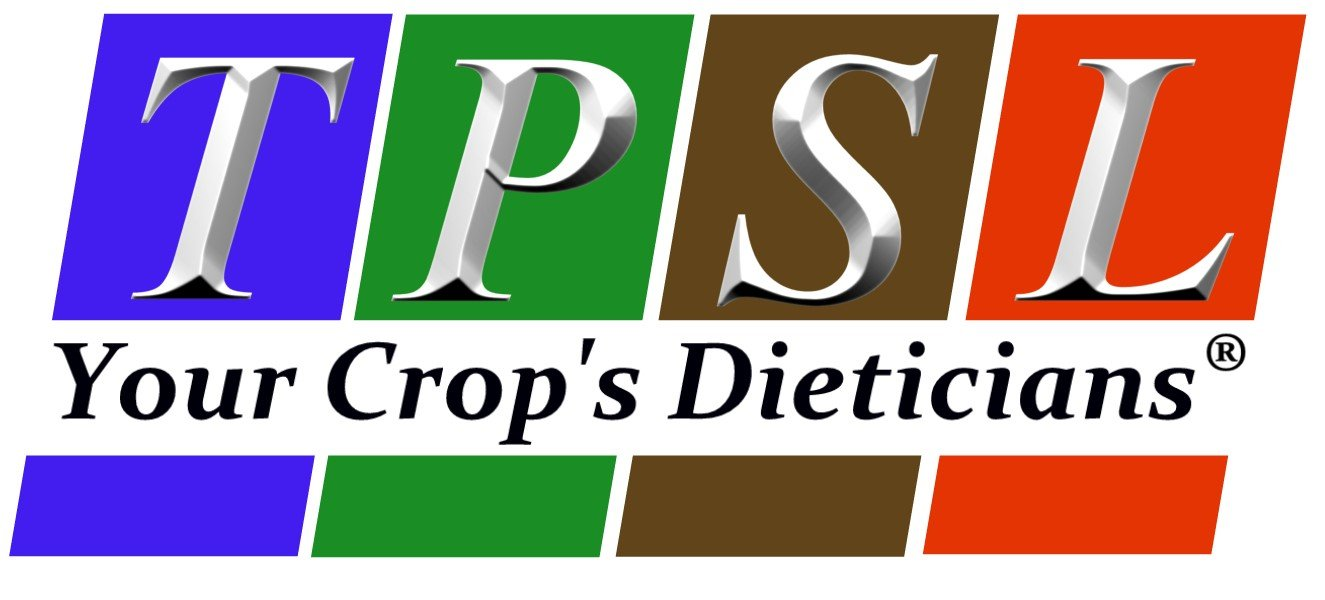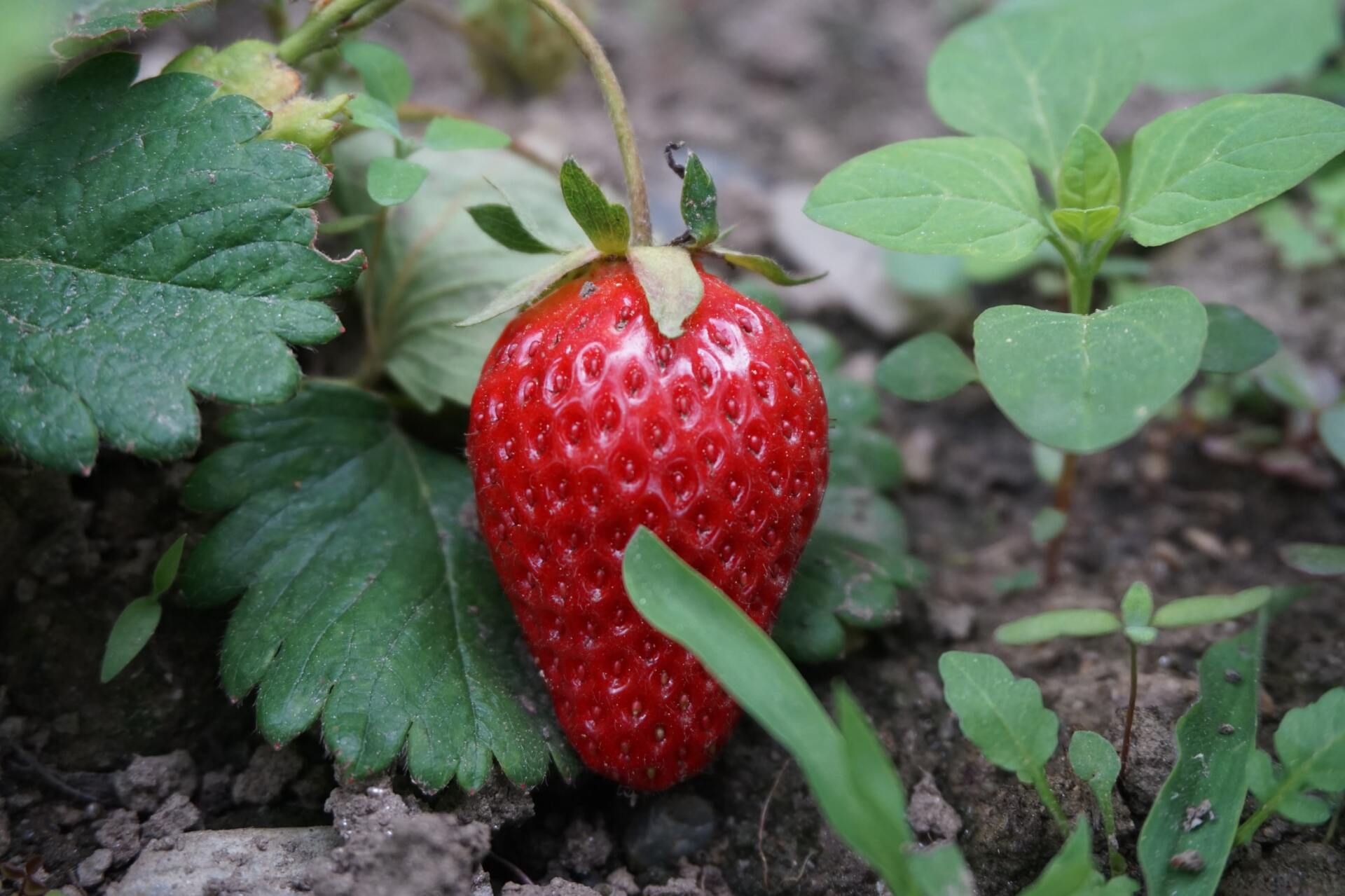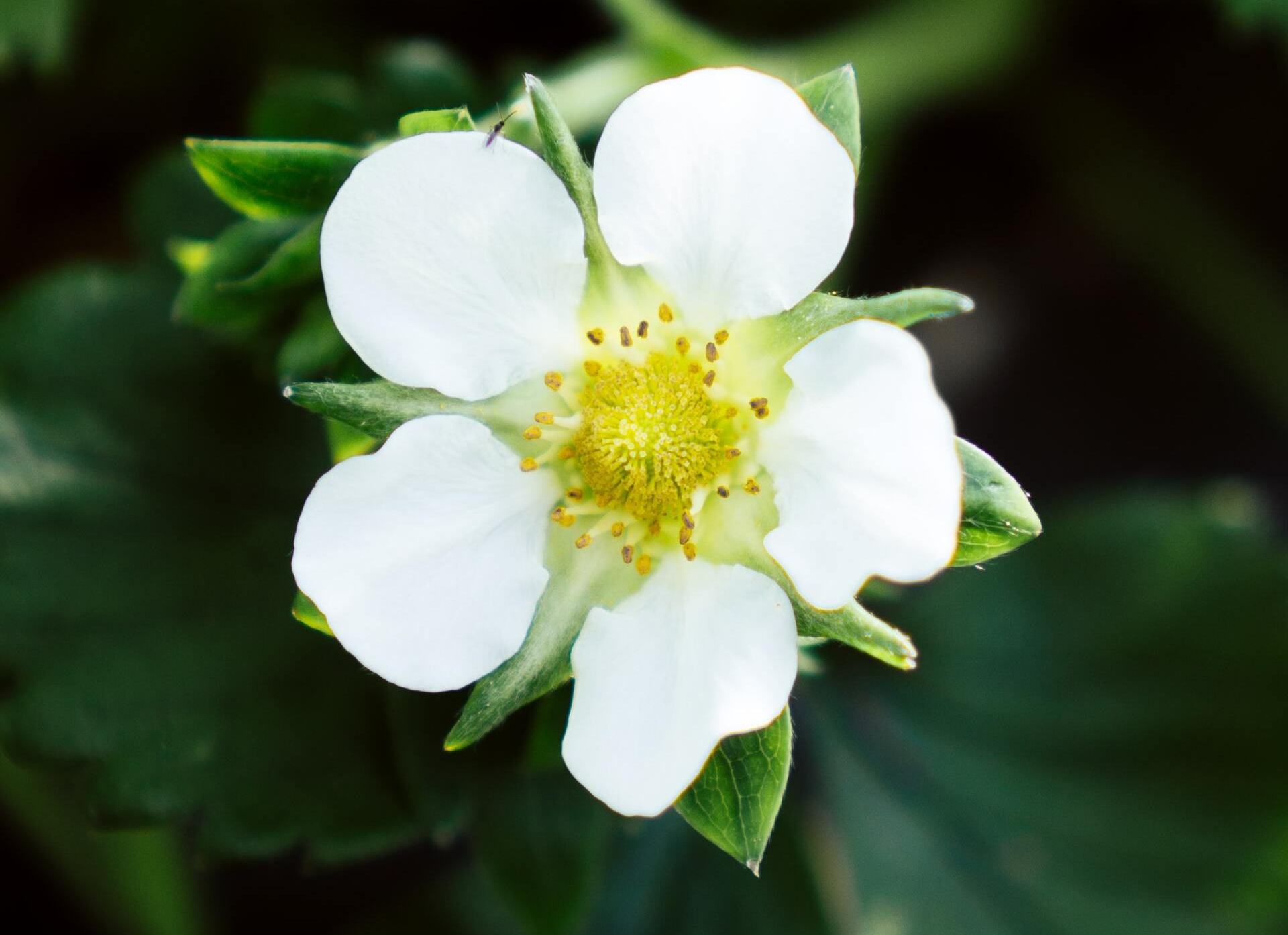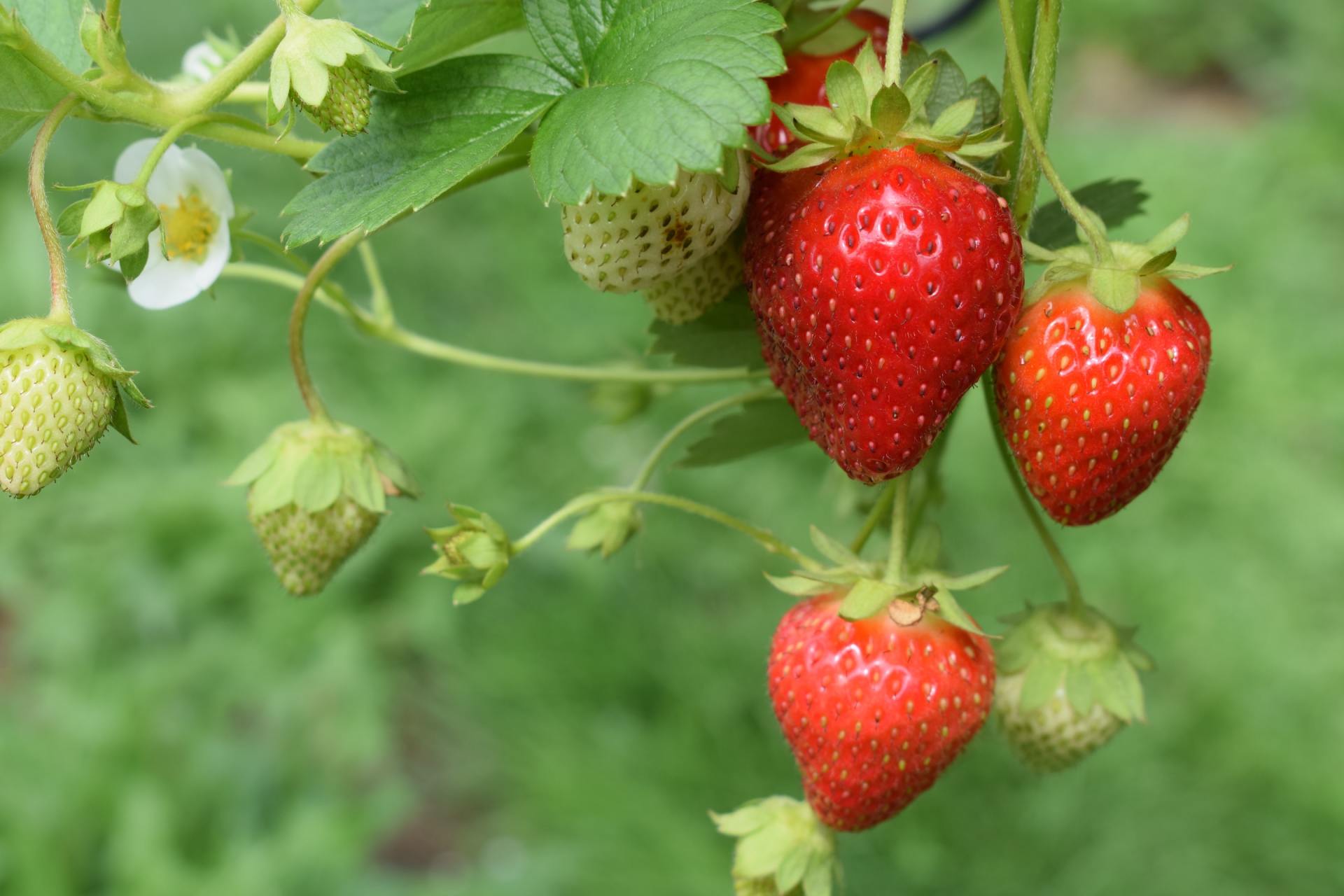Crop Monitoring Programs to help you plan your season.
Strawberries are one of the most sensitive plants in horticultural production. A good fertility program must be used because strawberries are very susceptible to nutrient problems. Close attention to the nutrient needs of your strawberries is vital because strawberries are harvested for an extended period during the season. They require a constant source of complete nutrition in just the right amounts to ensure good yields of high quality berries. The task is made even more difficult because straw-berries are also very susceptible to diseases and insect damage. However, developing a good fertility plan that is used in a timely manner will contribute to disease and insect control. Improving soil health is a key factor in insect and disease management as well as providing a foundation for building soil fertility.
Commercial strawberry production practices commonly include drip irrigation, which facilitates fertilization with soluble fertilizers injected into the watering system. Granular fertilizers are used for matted row and other production systems.
Soil and Tissue testing—why do it?
A soil test should be completed before planting berry plants. Results will provide information about the quantity of nutrients present and an estimate of how well those nutrients will be released for plant use.
To get a more complete picture, tissue testing as plants grow and fruit appears, provides information about the intensity or rate of uptake into the plant. This will tell you whether the plants are getting the right amount of nutrition at the right time. The plant integrates all the factors that affect nutrient uptake from the soil—chemical solubility, nutrient quantity, rainfall, sunlight, and temperature—and produces fruit according to how well (or poorly) the nutrient program meets the needs of the plant, under your growing conditions.
Only tissue testing can tell you how well the plant is using the nutrients you’ve supplied, or whether more of certain nutrients are needed. Soil test results, coupled with periodic tissue testing provides a nutrient audit for a more complete picture of your crop’s health and vigor throughout the harvest season. The audit allows you to adjust the fertilization program as needed, during the growing season, to fix any problems that show up on tissue test results.
The payoff is greater yield and higher quality fruit.
It would be helpful to submit a few leaves for observation purposes. Petiole Analysis indicates the amount of nutrients that would be deficient or toxic in the next 7 to 21 days, and serves as a basis for the nitrogen, phosphorous, potassium and other macro and micronutrient rate recommendations. Each sample should include 25 to 35 petioles randomly selected within a uniform representative area of the field. For example, all of the petioles in a single sample should be the same variety, growing on the same soil type, planted at the same time and having the same management history. For the most accurate recommendations, we ask growers to provide specific information about each sample. Details about fertilization history, soil test, environmental conditions and the name of the variety being grown should be written on the
Plant Submittal Form.
There are three ideal times to test:
The soil at pre-plant -
Strawberries prefer a soil pH of 6.0 to 6.5, in the slightly acid range. This is necessary to ensure uptake of adequate amount of several trace elements and phosphorus that are more plant available in that pH range.
Adjustment of soil pH to this range is best done before planting. It takes some time to settle down the many chemical and biological changes that occur when soil pH is adjusted and plants can struggle with getting nutrients before the new conditions become effective.
Agricultural lime, preferably dolomitic lime, can be used to increase pH if necessary, and ammonium sulfate, or elemental Sulfur can be used to reduce soil pH. These sources will also supply needed sulfur for proper plant nutrition. Sulfur needs have often been often overlooked in earlier fertilizer programs.
Suggestions for soil pH adjustment will be included with your soil test results.
During blooming stage -
To collect a tissue sample, select the most recently mature, trifoliate leaves (MRMLs). Those leaves are full-sized/fully expanded, green and consist of one petiole (leaf stalk) with three leaflets, usually located 3 to 5 leaves back from the growing point.
When MRMLs are being collected, it is very important to detach the petiole from the leaflets immediately. This action halts nutrient transfer between the two plant parts, which are analyzed separately.
Each sample should include leaves and 25-35 petioles from 20-25 locations within a uniform area.
For example, all of the plant material in a single sample should be the same variety, growing on the same soil type, planted at the same time and having the same management history.
During fruiting stage -
Samples can be submitted as either predictive (routine) or diagnostic (troubleshooting).
Typically, biweekly samples collected during the bloom and fruit stages are considered predictive.
If plants are showing signs of poor growth or health, tissue samples should be submitted as diagnostic and include both samples of unhealthy and of healthy plants for comparison.
When submitting tissue samples, be sure to fill out the information sheet completely, including fertilization history and environmental conditions. It is particularly important to provide the current growth stage (Bloom or Fruit) and the number of weeks since first bloom. For example, week 1 (first bloom) would be the stage where most of the plants have two or more flowers on them.
Management recommendations you receive on your report depend on the information you provide with the sample.
Join Our Mailing List
Thank you for joining our mailing list. You will now begin to receive event announcements, newsletters and all of our latest updates.
Please try again later.
Email Us
For general inquiries and questions, contact us via email.
(956) 383-0739info@tpslab.com
Refund Policy
Billing Terms and Conditions
All Rights Reserved | TPSL







